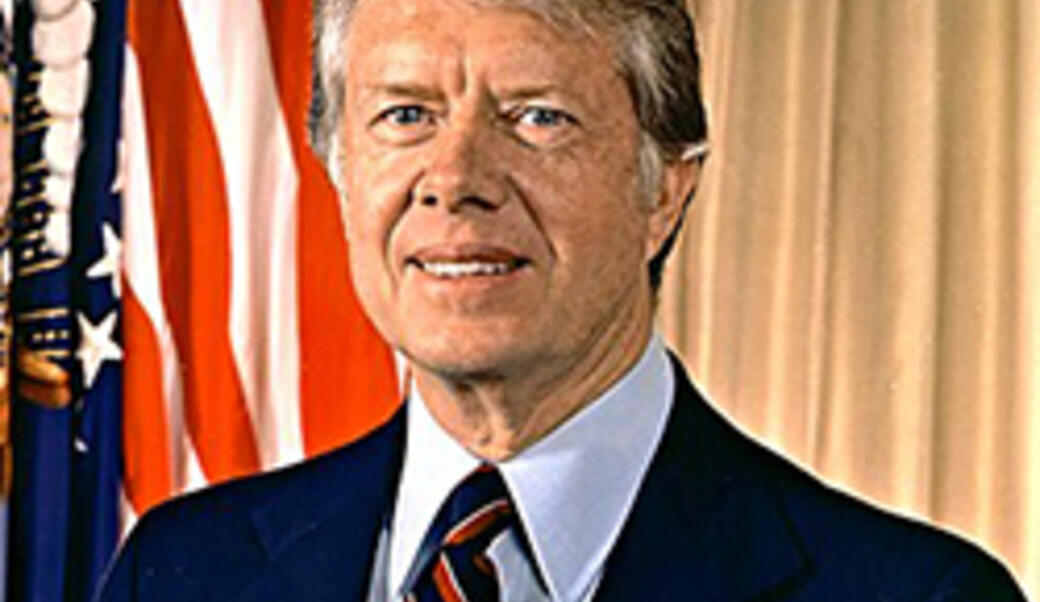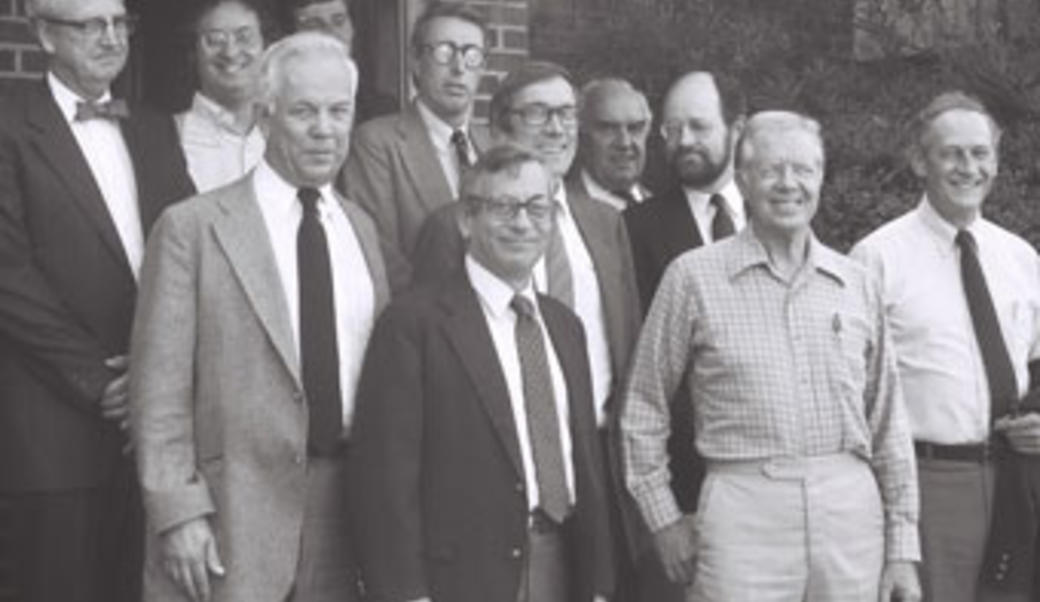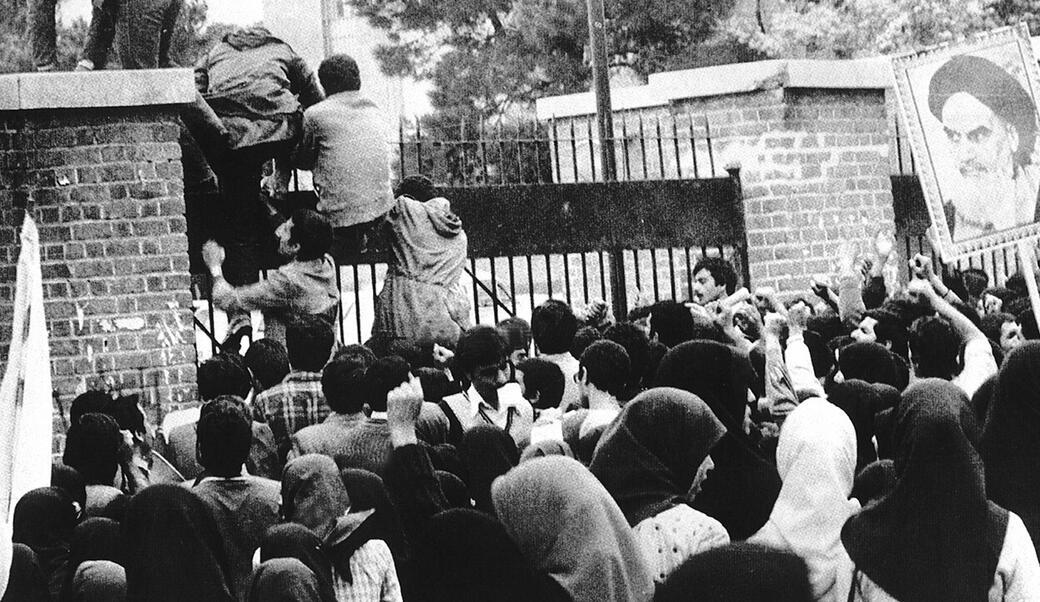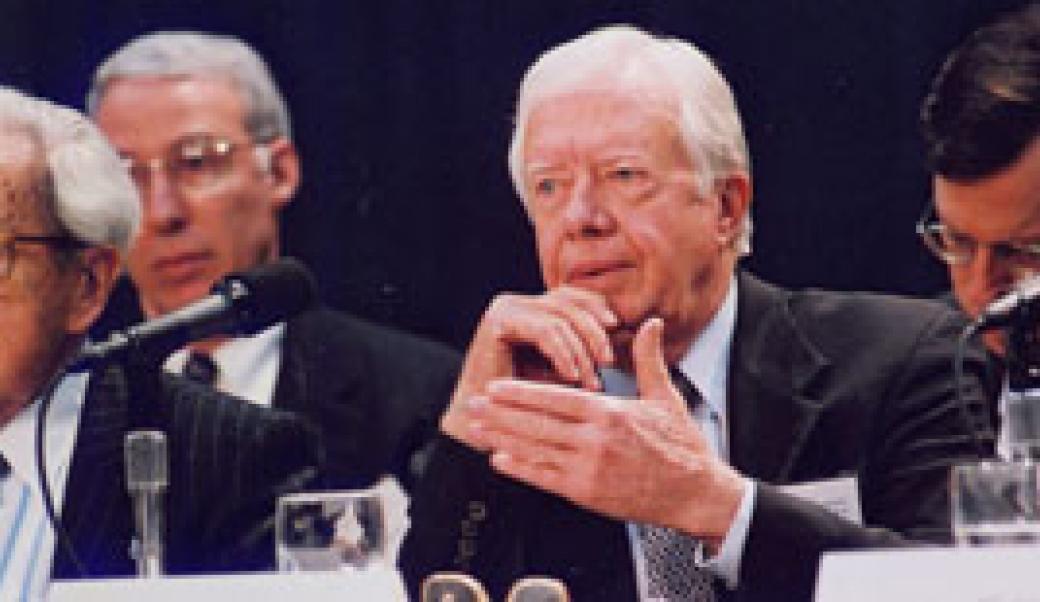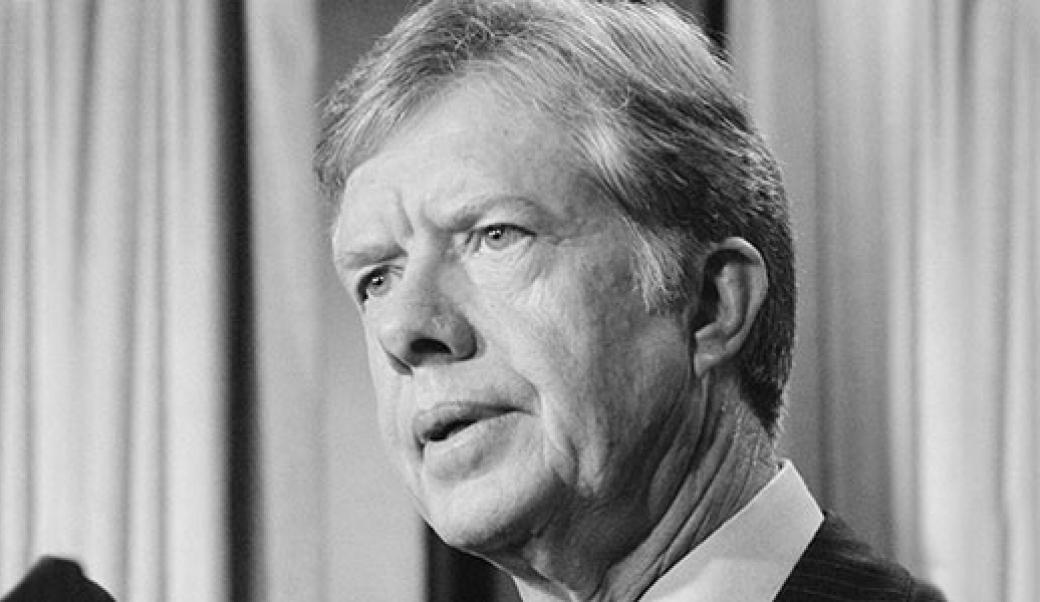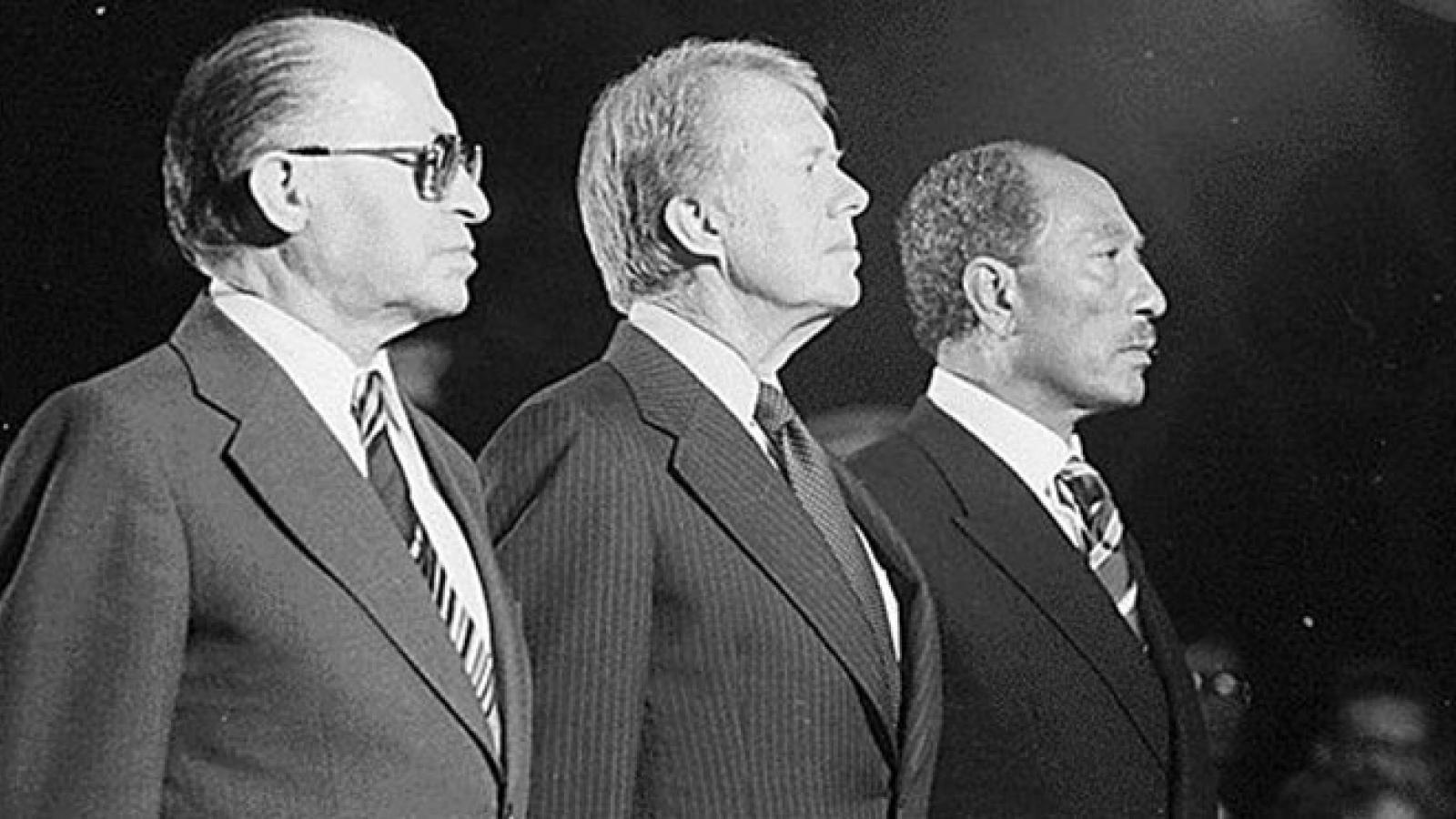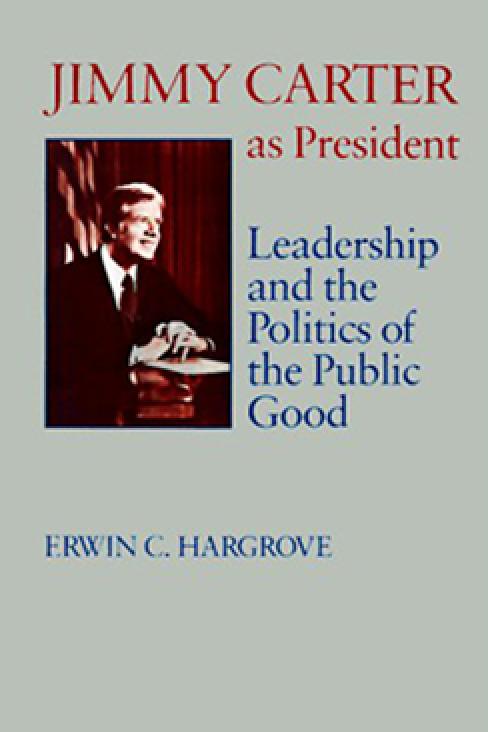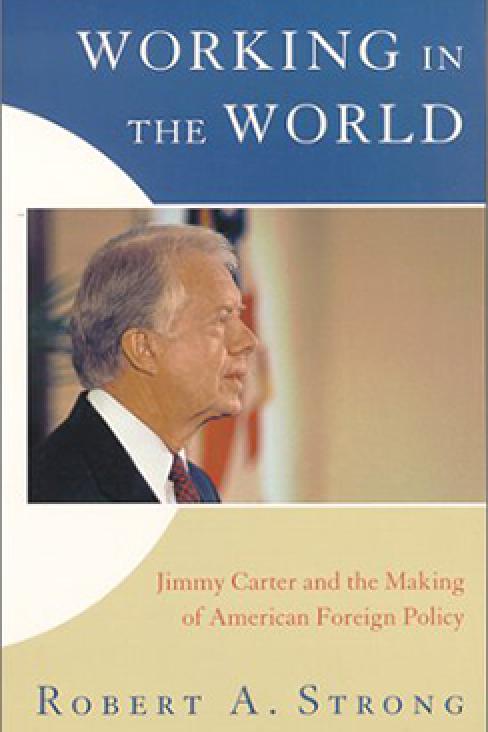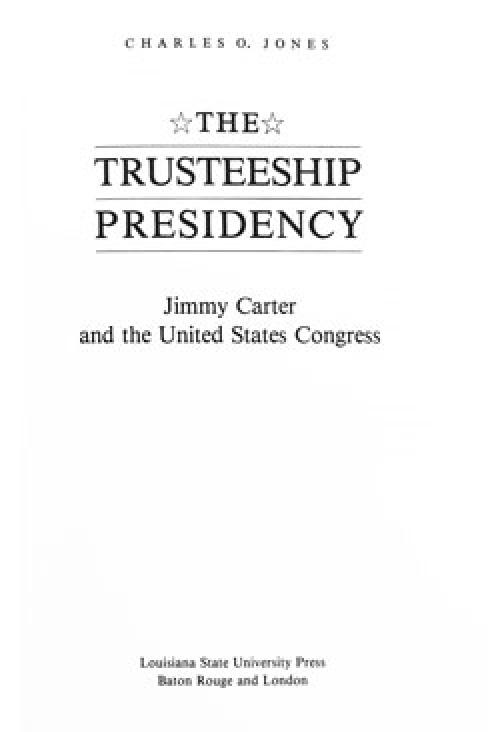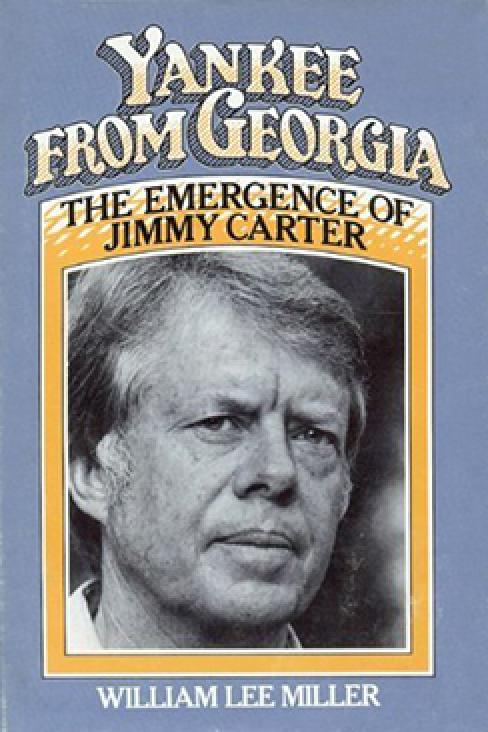1924 - 2024
Jimmy Carter
We simply must have faith in each other, faith in our ability to govern ourselves, and faith in the future of this Nation. Restoring that faith and that confidence to America is now the most important task we face. It is a true challenge of this generation of Americans. "Crisis of Confidence" Speech
Overview
Jimmy Carter's one-term presidency is remembered for the events that overwhelmed it—inflation, energy crisis, war in Afghanistan, and hostages in Iran. After one term in office, voters strongly rejected Jimmy Carter's honest but gloomy outlook in favor of Ronald Reagan's telegenic optimism. In the past two decades, however, there has been wider recognition that Carter, despite a lack of experience, confronted several huge problems with steadiness, courage, and idealism. Along with his predecessor Gerald Ford, Carter must be given credit for restoring the balance to the constitutional system after the excesses of the Johnson and Nixon "imperial presidency."
Fast Facts
Featured Insights
Presidential Oral Histories
Featured Video
September 17, 1978
President Carter’s Remarks on the Camp David Summit
The Camp David Accords were signed by Egyptian President Anwar El Sadat and Israeli Prime Minister Menachem Begin on Sept. 17, 1978, following twelve days of secret negotiations at Camp David

